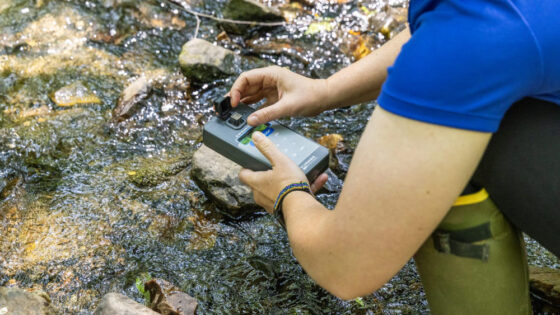Cory, R.M., and L.A. Kaplan. 2012. Limnology and Oceanography 57(5):1347–1360.
doi: 10.4319/lo.2012.57.5.1347
Abstract
We investigated the biological lability of fluorescent dissolved organic matter (FDOM) from a temperate Piedmont stream. Plug-flow bioreactors, colonized and maintained with natural stream water, were used to determine the concentrations of stream-water biodegradable dissolved organic carbon (BDOC) and relative concentrations of FDOM within operationally defined biodegradability classes. Labile molecules with turnover times of hours are metabolized within the stream reach where they originated; semi-labile molecules with turnover times of days travel out of the reach and are transported downstream before being metabolized; and a more recalcitrant class with a longer but undetermined turnover time flows through the river network without being metabolized. Between 26% and 31% of the DOC was biodegradable, with 8.6% labile and the balance semi-labile. Humic-like FDOM was a proxy for more recalcitrant DOM, exhibiting a ± 2% change as a function of increased bioreactor residence time. Humic-like FDOM represents only the more recalcitrant and perhaps the more hydrophobic constituents and not the ecologically important semi-labile humic substances within the BDOC pool. Tyrosine-like and tryptophan-like FDOM constituents included not only labile DOM, but also semi-labile, and more recalcitrant moieties. For example, 13% of the tryptophan-like FDOM was labile, 14% was semi-labile, and 73% was more recalcitrant, while tyrosine-like FDOM was 100% biodegraded and the majority (44–69%) was classified as labile. Collectively our results challenge some previous assessments of FDOM lability classifications and highlight the need to connect fluorescence characteristics of DOM to residence times of different carbon pools that spiral through a river network.
Funding
NSF Award No. DEB-0424681 Title: LTREB: Stream ecosystem structure and function within a maturing deciduous forest. Duration: August 2004–July 2009.



